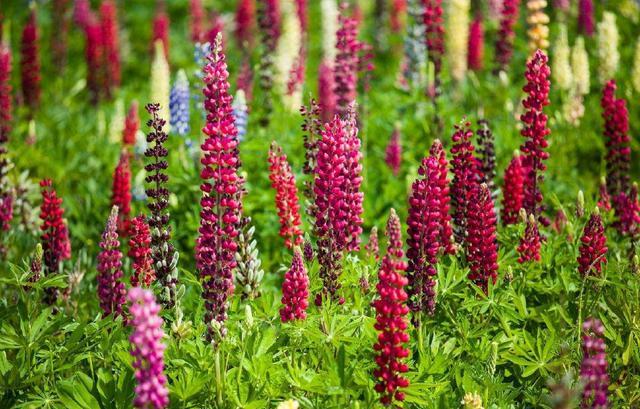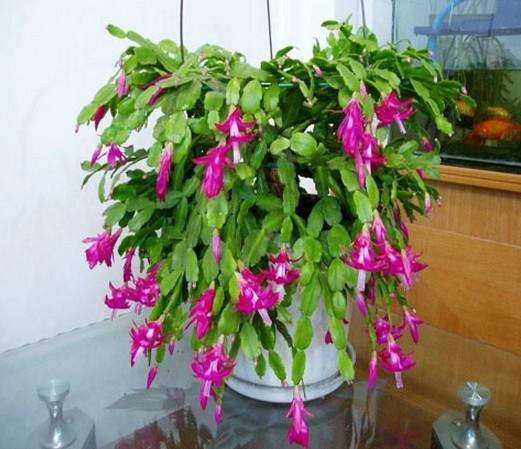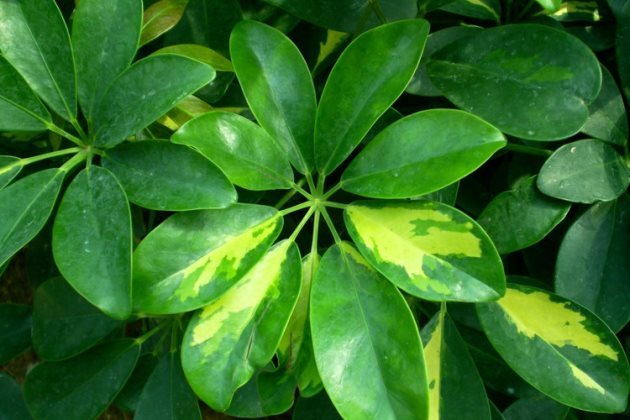Lu Binghua is also called Lupin for garden viewing. Maternal love, happiness, greedy heart.

Lubing flower (herb)
Lubinghua (Latin name: Lupinus micranthus Guss.), also known as Lupin, is a plant of the genus Rosaceae, Leguminosae and Lupin. Stems ascending or erect, basally branched, whole plant covered with brown or pale hirsute. Racemes terminal, shorter, inflorescence axis thickened, still longer than compound leaves, flowering from March to May, fruiting from April to July.
Like many legumes, Lubing peanuts have nodules and can fix nitrogen in the air to the soil; its seeds are rich in nutrients, especially protein. During the period of Japanese occupation, the Japanese introduced Lu Binghua to Taiwan for the purpose of being used as green manure. Since the Japanese cultivate the most yellow feather fan beans in Taiwan, the most cultivated in Taiwan today are yellow feather fan beans. When growing tea, tea farmers in the mountains of Taiwan will plant "Lu Binhua" near their tea plants as green manure. Lu Binghua can also be watched in the garden.
Morphological characteristics
Stems ascending or erect, basally branched, whole plant covered with brown or pale hirsute. Leaves palmately compound, 5-8 leaflets; petiole much longer than leaflets; stipules subulate, lanceolate to oblanceolate, up to 1 cm long, leaflets 10-17, thick, mostly basal, lower half connected with petiole; leaflets Obovate, oblanceolate to spatulate, 15-70 mm long and 5-15 mm wide, apex obtuse or acute, mucronate, base attenuate, leaf surface smooth, abaxially hirsute.
Petal
Racemes terminal, short, 5-12 cm long, not longer than compound leaves, inflorescence axis slender, densely composed of hundreds of butterfly-shaped florets, lower flowers alternate, upper flowers irregularly whorled, flowers 10-14 mm long; bracts subulate, 3-4 mm long, hairy; pedicel very short, 1-2 mm long; calyx 2-lipped, hirsute, lower lip longer than upper lip, lower lip with 3 deep lobes, upper lip shallower, fruit persistent Corolla blue, flag and keel with white markings. In addition to the common goose yellow, red, there are light blue, pink, brick red, white and two colors and other colors, emitting a strong refreshing fragrance.
Fruit
Infructescence axis thickened, still longer than compound leaves; pods oblong-linear, 2.5-5 cm long and 0.8-1.2 cm wide, densely brown hirsute, apex with a short beak of the lower finger, internodes podiform; seeds 3-4. Seeds ovate, flattened, yellow, with brown or red markings, smooth. The flowering period is from March to May and the fruiting period is from April to July.
Growing environment
The sex likes to be cool, sunny, avoid hot, slightly shady. Deep-rooted, few nodules. Born in sandy soil, acidic sandy loam with deep soil layer, loose fertility and good drainage (ph value 5.5) is required, and the plant growth of neutral and slightly alkaline soil is poor.
Distribution range
Italy, Spain and other countries in the Mediterranean region have an annual wild type. The Soviet Union, the Netherlands, Belgium, the United States, New Zealand and so on are more cultivated.
Reproduction method
Sowing and reproduction
Sowing and propagation were carried out in autumn and germinated neatly at 21-30 ℃. In the production of lupin, it can be sowed in spring and autumn and sowed in March, but the growing period after spring sowing is in summer, which can lead to low proportion of non-flowering plants, short spikes and poor ornamental effect due to the influence of high temperature and heat. Under natural conditions, autumn sowing blossoms earlier and grows better than spring sowing, sowing in the middle of September to October, and April to June of the following year. 72-hole or 128-hole disk on demand, covered. Seedling soil should be loose and uniform, breathable and water conservation, special seedling soil or peat soil, perlite mixed use is better. Seeds larger, common or coated, about 40 / g. The optimum temperature for germination was about 25 ℃, and the medium was moist. The seeds were unearthed and germinated in 7 days and 10 days, and the germination rate was high.
Cut out
Please click to enter a picture description
Propagation cuttage
Cuttage propagation in spring cutting rhizome sprouting branches, cut into 8-10cm, preferably with some rhizome, cutting in the cold bed. In hot and rainy areas in summer, lupin can not die after summer, so it can be used for biennial cultivation. It is suitable to be planted in early spring, plant distance from 40cm, early planting, early flowering and seed setting. The aboveground part withered after fruiting before summer, and new plants germinated in autumn, or seeds were collected before withering. North China needs protection over the winter.
Cultivation techniques
Cultivation and management
The seedling stage of lupin was 30-35 days, and the seedlings were transferred and planted after the true leaves were fully unfolded. The root system of lupin is well developed, and the original soil is retained when transplanting seedlings to promote seedling retardation. The pot should be changed twice according to the growth situation before planting, and the pot should be selected as a high barrel basin, in order to meet the growth needs of taproot roots and determine the reasonable planting density. For autumn sowing, corresponding cold prevention measures should be taken when overwintering, and the temperature should be above 5 ℃ to avoid freezing damage to leaves and affect the vegetative growth and ornamental effect in the early stage. The lupin is cool, and it belongs to perennials, so special attention should be paid to the management of high temperature in summer to prevent the leaves from yellowing, dwarfing and even death caused by high temperature and humidity, sun burn. In the garden application, the lupine in the flowering stage can also be directly planted under the forest trees and in a cool and ventilated place to facilitate summer management. After watching potted plants, it is necessary to timely cut off the residual ears of flowers and withered old leaves, control fertilizer and water, and do a good job of shading protection in high temperature period to ensure safe summer.
Soil regulation
According to the growth habits of lupine, it is very important to control and regulate the pH (ph) of the culture medium during cultivation for the normal growth and flowering of lupin. In general, a simple and effective regulation method is to apply sulfur powder to the cultivation substrate. As it takes a certain time for sulfur to decompose in the substrate (more than 40 days) to play a regulatory role, so the application should be carried out as soon as possible. Generally, it starts when 2-3 true leaves appear after transplanting seedlings, and the application amount depends on the original pH of the culture medium. In addition, although acid fertilizers such as ferrous sulfate and aluminum sulfate can reduce ph in a short time, excessive salt ion concentration will cause toxicity to plant roots and should be used less in production.
Species classification
Yellow feather lupin
The root system is more than 1.5 m deep in the soil layer, and the stem is hairy, solid, 50-80 cm high. Palmately compound, leaflets 7-11, lanceolate, rectangular-orbicular or oblanceolate, hirsute. Raceme, yellow flowers, fragrant, calyx upper lip bifid, lower lip has three teeth. The pod is round, flattened, 5-6 cm long and contains 1-5 seeds. The seed is gray, white or black, and the weight of 1000 seeds is 120g to 160g. It has strong drought tolerance, sandy soil grows well, is sensitive to calcareous soil, and is prone to chlorosis. Fresh grass at flowering stage contains about 20% crude protein, and seeds are particularly rich in protein. Stems and leaves contain alkaloids and taste bitter. The content of alkaloids varies from variety to variety, generally 0.025% to 0.1%. Varieties with a content of more than 0.3% should not be used as feed.
Narrow-leaf lupine
The stem is 1 to 1.5 meters high and has many branches. Purple or white flowers. The pods are hairy, each containing 4 seeds, and the weight of a thousand seeds is 160 to 200 grams. The content of alkaloid is the highest during flowering, which is generally 0.005-0.04%.
White feather lupin
Hairy. Leaflets 5-7, Obovate moment rounded, margin ciliate. Flowers white or bluish, calyx indehiscent. Seeds white, rounded. The content of alkaloids is between the two mentioned above.
Gallery
The compact dwarf variety is also the latest early flowering variety cultivated in the market, with a height of 50cm to 60cm, neat and robust spikes, up to 12 foil swords, and rich colors (red, pink, yellow, blue and white). It can blossom when sowing in January and February, sowing in spring and autumn, suitable for potted and ornamental.
Grant belt
Tall variety, height 100-130 cm, late flowering, strong growth, multi-color, suitable for open-field planting and perennial ornamental.
Main value
1. Potted ornamental plant
The emergence of dwarf varieties with symmetrical plants and luxuriant leaves broadens the scope of marketing of lupin, making it have the opportunity to enter ordinary families. Coupled with its special meaning, it is believed that people will double their love.
two。 Use of flower arrangement
Rich plant materials have always been important materials for the creation of flower masters. With the continuous increase of lupin planting, its use value as a cut flower has been gradually paid attention to and discovered by people to realize the cultivation and production of cut flowers.
3. Garden use
Lupin has special plant shape and rich inflorescence color, which is a rare configuration material in garden plant landscaping. It can be used as flower border background and riverside planting on the edge of forest, which will give people a kind of exotic and different enjoyment. This is more and more accepted and respected by professionals.
Plant culture
The Flower of Saint Auguenis, the Master of Kartago in the 5th Century
Since ancient times, Christianity has had the habit of connecting saints with specific flowers, because the church often decorates the altar with blooming flowers when commemorating saints. In medieval Catholic monasteries, all kinds of flowers were planted like gardening centers. Over time, the church combined 366-day saints with different flowers to form the so-called calendar. At that time, most of the monasteries were located in southern Europe, which had a Mediterranean climate and was very suitable for planting flowers and plants. The lupine is the core flower of ── Saint Auguenis, Bishop of Kartago in the 5th century. It is a leguminous annual herb found in the Mediterranean. Lupin grows mostly in a sandy texture that other plants cannot survive.
Meaning of scientific name
"Lupin" means "grief" in Greek. The bitter seeds of the lupine are unusually contained in the mouth, making people frown and seem to be very painful. Therefore, its fancy language is "bitter". People who are blessed by this kind of flowers are always regarded as "dogs can't spit ivory out of their mouths". They like to tell the truth and don't know how to look at the occasion. This kind of rectal personality, you'd better change it, otherwise you will suffer from boredom. Lu Binghua's words: maternal love, happiness, greedy heart, bitterness, sadness, fantasy.
There is also a saying that the name "lu ben fa" comes from Hakka dialect, and "Lu Binghua" comes from "roadside flower" in Hakka dialect, because "Lu Binhua" is homonym with "roadside flower" in Hakka dialect. The famous TV series Lu Binghua is adapted from Zhong Zhaozheng's social realistic novel. Zhong Zhaozheng is a Hakka in Taiwan, and Lu Binghua is regarded as a "mother flower" by Taiwan Hakkas.
- Prev

The two methods of growing flowers in summer can cool the potted plants and stop the leaves from withering.
This summer, it is much hotter than before, and the hot weather is not only unbearable, but also disadvantageous to the maintenance of potted flowers. Many flowers pot plants, the growth temperature is generally below 30 ℃, which makes many plants difficult to withstand high temperature, leaf by leaf.
- Next

Can't you raise duck feet well? It will flourish in this way.
Duck palm wood, also known as duck foot wood, goose palm wood and so on, is a very common greening plant in residential areas and parks. Duck palm wood is very good for purifying the air and absorbing carbon dioxide, formaldehyde, benzene and other decoration waste gas, secondhand smoke and so on.
Related
- Wuhan Hospital Iron Tree Blooming Result Was Instantly Frightened by the Gardener Master
- Which variety of camellia is the most fragrant and best? Which one do you like best?
- What is the small blue coat, the breeding methods and matters needing attention of the succulent plant
- Dormancy time and maintenance management of succulent plants during dormancy
- Minas succulent how to raise, Minas succulent plant pictures
- What are the varieties of winter succulent plants
- How to raise succulent plants in twelve rolls? let's take a look at some experience of breeding twelve rolls.
- Attention should be paid to water control for succulent plants during dormant period (winter and summer)
- Watering experience of twelve rolls of succulent plants
- Techniques for fertilizing succulent plants. An article will let you know how to fertilize succulent plants.

